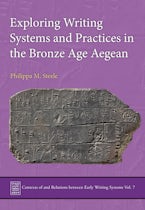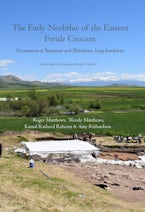Life and Death in Asia Minor combines contributions in both archaeology and bioarchaeology in Asia Minor in the period ca. 200 BC – AD 1300 for the first time. The archaeology topics are wide-ranging including death and territory, death and landscape perception, death and urban transformations from pagan to Christian topography, changing tomb typologies, funerary costs, family organization, funerary rights, rituals and practices among pagans, Jews, and Christians, inhumation and Early Byzantine cremations and use and reuse of tombs. The bioarchaeology chapters use DNA, isotope and osteological analyses to discuss, both among children and adults, questions such as demography and death rates, pathology and nutrition, body actions, genetics, osteobiography, and mobility patterns and diet. The areas covered in Asia Minor include the sites of Hierapolis, Laodikeia, Aphrodisias, Tlos, Ephesos, Priene, Kyme, Pergamon, Amorion, Gordion, Boğazkale, and Arslantepe.
The theoretical and methodological approaches used make it highly relevant for people working in other geographical areas and time periods. Many of the articles could be used as case studies in teaching at schools and universities. An important objective of the publication has been to see how the different types of results emerging from archaeological and natural science studies respectively could be integrated with each other and pose new questions on ancient societies, which were far more complex than historical and social studies of the past often manage to transmit.
Acknowledgements vii
Authors and Addresses ix
Introduction. Dead bodies – Live data: Some reflections from the sideline xiii
J. Rasmus Brandt
PART I: From life to death. Death and the social and funerary setting
The Sanctuary of St Philip in Hierapolis and the tombs of saints in Anatolian cities
Francesco D’Andria
2. Necropoleis from the territory of Hierapolis in Phrygia: New data from archaeological surveys
Giuseppe Scardozzi
3. The South-East Necropolis of Hierapolis of Phrygia: Planning, typologies and construction techniques
Donatella Ronchetta
4. Tomb 163d in the North Necropolis of Hierapolis of Phrygia. An insight into the funerary gestures and practices of the Jewish Diaspora in Asia Minor in Late Antiquity and the Proto-Byzantine period
Caroline Laforest, Dominique Castex, and Frédérique Blaizot
5. Tomb ownership in Lycia; site selection and burial rights with selected rock tombs and epigraphical material from Tlos
Gül Işın and Ertan Yıldız
6. The sarcophagus of Alexandros, son of Philippos. An important discovery in the Lycian city of Tlos
Taner Korkut and Çilem Uygun
7. ‘Till death do them part’: Reconstructing Graeco-Roman family life from funerary inscriptions of Aphrodisias
Esen Öğüş
8. Social status and tomb monuments in Hierapolis and Roman Asia Minor
Sven Ahrens
9. New evidence for non-elite burial patterns in central Turkey
Andrew L. Goldman
10. Reflections on the mortuary landscape of Ephesus. The archaeology of death in a Roman Metropolis
Martin Steskal
11. Christian burials in a pagan context at Amorium
Christopher S. Lightfoot
12. Romans, Christians, and pilgrims at Hierapolis in Phrygia. A funerary journey of mental changes
Camilla Cecilie Wenn, Sven Ahrens, and J. Rasmus Brandt
PART II: From death to life. Man and ancient life conditions
13. Analysis of DNA in human skeletal material from Hierapolis
Gro Bjørnstad and Erika Hagelberg
14. Isotopic investigations of human diet and mobility at the site of Hierapolis, Turkey
Megan Wong, Elise Naumann, Klervia Jaouen, and Michael Richards
15. Diet in Roman Pergamon using stable isotope (C, N, S), osteoarchaeological and historical data – preliminary results
Johanna Propstmeier, Olaf Nehlich, Michael Richards, Gisela Grupe, Gundula H. Müldner, and Wolf-Rüdiger Teegen
16. Pergamon – Kyme – Priene: Health and disease from the Roman to the Late Byzantine period in different locations of Asia Minor
Wolf-Rüdiger Teegen
17. Toothache, back pain, and fatal injuries – what skeletons tell about life and death at Roman and Byzantine Hierapolis
Henrike Kiesewetter
18. Health and disease of infants and children in Byzantine Anatolia between AD 600 and 1350
Michael Schultz and Tyede H. Schmidt-Schultz
19. Infant and child skeletons from the Lower City Church at Byzantine Amorium
F. Arzu Demirel
20. The wrestler from Ephesus: Osteobiography of a man from the Roman period based on his anthropological and palaeopathological record
Jan Nováček, Kristina Scheelen, and Michael Schultz
General Index












